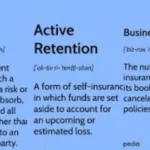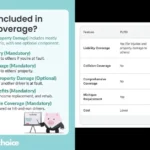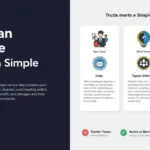Introduction to Saying Thank You in Korean
Learning how to say thank you in Korean is one of the most essential phrases for anyone interested in Korean culture, travel, or language. Whether you’re visiting Seoul, watching K-dramas, or simply want to show appreciation to Korean friends, knowing how to properly say thank you in Korean makes a meaningful difference. This guide covers all the variations, contexts, and cultural nuances of expressing gratitude in Korean.
Basic Ways to Say Thank You in Korean:
1. 감사합니다 (Gamsahamnida) – Formal Thank You:
-
The most common and polite way to say thank you in Korean
-
Used in formal situations, with elders, or in professional settings
-
Example: When receiving help from a stranger or your boss
2. 고마워요 (Gomawoyo) – Polite Thank You:
-
Slightly less formal than 감사합니다 but still respectful
-
Appropriate for acquaintances, coworkers, or service staff
-
Example: Thanking a waiter or a colleague
3. 고마워 (Gomawo) – Casual Thank You:
-
Informal version used with close friends or people younger than you
-
Never use with superiors or elders
-
Example: Thanking a sibling or close friend
Advanced Thank You Expressions in Korean:
1. 정말 고마워요 (Jeongmal gomawoyo) – “Thank you very much”:
-
Adds emphasis by including “정말” (really)
-
Shows deeper appreciation in polite situations
2. 대단히 감사합니다 (Daedanhi gamsahamnida) – “Thank you greatly”:
-
Extra formal expression of extreme gratitude
-
Used in speeches, ceremonies, or very formal occasions
3. 고맙습니다 (Gomapseumnida) – Alternative Formal Thank You:
-
Slightly less common but equally polite as 감사합니다
-
Preferred by some native speakers in certain regions
Cultural Context: When to Use Each Thank You
| Situation | Recommended Phrase | Level of Formality |
|---|---|---|
| Business meeting | 감사합니다 | Very formal |
| Receiving a gift from elder | 대단히 감사합니다 | Extremely formal |
| Restaurant service | 고마워요 | Polite |
| Friend doing a favor | 고마워 | Casual |
| Teacher helping you | 감사합니다/고맙습니다 | Formal |
Pronunciation Guide for Thank You in Korean:
Perfect your thank you in Korean with these pronunciation tips:
-
감사합니다 → “Gam-sa-ham-ni-da” (soft ‘g’ like ‘gun’)
-
고마워요 → “Go-ma-wo-yo” (short ‘o’ sounds)
-
고마워 → “Go-ma-wo” (faster pronunciation)
Listen to native speakers and practice the subtle differences between formal and informal versions.
Body Language When Saying Thank You in Korean:
Korean culture values respectful gestures:
-
Bow slightly when saying thank you in Korean to elders
-
Maintain eye contact in formal situations
-
Use both hands when receiving gifts while thanking
-
Smile naturally with friends when using casual forms
Common Mistakes to Avoid:
-
Using 고마워 with elders – Always default to formal speech
-
Mispronouncing 감사합니다 – Practice the full 5-syllable phrase
-
Forgetting context – Match formality to the situation
-
Overusing English “thank you” – Koreans appreciate the effort to use their language
Responding to Thank You in Korean:
Complete your etiquette knowledge with these common responses:
-
아니에요 (Anieyo) – “No problem” (polite)
-
괜찮아요 (Gwaenchanayo) – “It’s okay” (casual)
-
별말씀을요 (Byeolmalsseumeulyo) – “Don’t mention it” (formal)
Conclusion:
Saying thank you in Korean properly shows respect and cultural awareness. From the formal 감사합니다 to the casual 고마워, each version serves an important purpose in Korean communication. Practice these phrases, understand their contexts, and you’ll make positive impressions in any Korean-speaking environment. Remember that in Korea, how you express gratitude often matters as much as the words themselves.
FAQs:
1. What’s the most common way to say thank you in Korean?
감사합니다 (Gamsahamnida) is the standard formal expression.
2. Can I use 고마워 with strangers?
No, always use 고마워요 or 감사합니다 with people you don’t know well.
3. How do I say “thanks a lot” in Korean?
정말 고마워요 (Jeongmal gomawoyo) or 대단히 감사합니다 (Daedanhi gamsahamnida) for stronger emphasis.
4. Is there a difference between 감사합니다 and 고맙습니다?
Both are formal, with 감사합니다 being slightly more common in daily use.
5. How should I bow when saying thank you?
A slight 15-degree bow is appropriate for most situations when saying thank you in Korean.
6. Can I just say “thank you” in English to Koreans?
While many understand English, using Korean phrases shows respect and cultural appreciation.
Master these expressions, and you’ll be ready to show perfect gratitude in any Korean situation!











